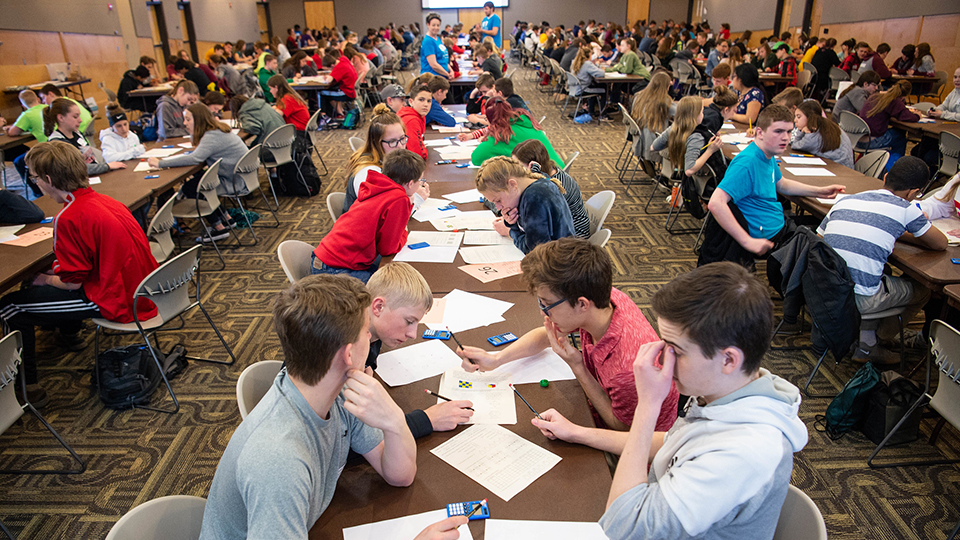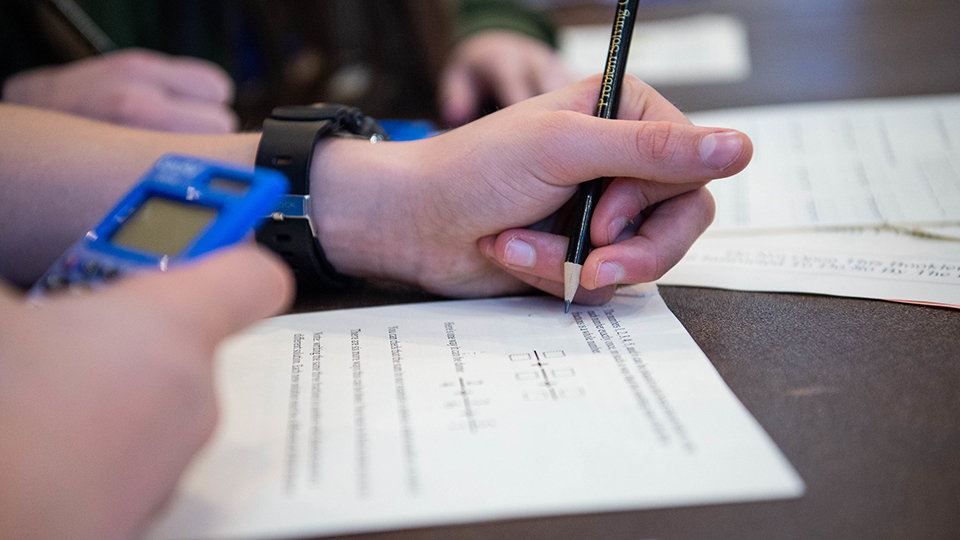The University of Wisconsin Oshkosh will see an influx of bright young minds this week, with middle and high school students spending a day competing for awards, bragging rights and thousands of dollars in scholarships at the fourth annual Mathematical Problem-Solving Contest.
The event, organized by the UWO math department and returning after a two-year pandemic hiatus, is Thursday and will include nearly 800 seventh- through 10th-grade students from 43 schools and 25 districts across the state. Students can compete both as individuals and as part of a team of up to four people.
“We are very excited to be able to have this event back on campus,” said math professor Eric Kuennen. “It’s so much fun to see all these middle and high school kids engaged in solving problems, exploring our campus and feeling like a college student for a day.”
Brain ready, phone away
The event runs from 8 a.m. to 2:10 p.m., beginning with a check-in at one of multiple contest sites and closing with an awards ceremony inside the Kolf Sports Center fieldhouse. In between are the individual contest, team contest, optional educational activities around campus and a lunch in Blackhawk Commons.
Students are provided with a pencil and calculator, but are encouraged to bring extra pencils, a sharpener, snacks and water. Both the individual contest and team contest last 45 minutes
Trophies and medals will be given to the individuals and teams with the top scores in each division. The top performing schools also will be recognized. UWO scholarships also are offered to the students with the top three overall high scores in the individual contest.
Once both contests wrap, students have opportunities to check out a variety of activities—from lessons on removing contaminants and turning the Fox River into drinking water, to 60-second fine motor skill challenges or a look at real dinosaur bones and remarkable rocks and minerals. There are 15 total optional activities from the start of lunch sessions to the start of the awards ceremony.

Last held in 2019, the UWO Mathematical Problem-Solving Contest brings students from dozens of schools together on campus.
What makes a good problem?
The centerpiece of the day—the math problems themselves—are written to test students’ math problem-solving skills and are aligned with the Common Core Standards for Mathematical Practice. They’re put together by Kuennen and math professor John Beam.
Kuennen said the problems are designed not to test knowledge of a specific math topic or technique but rather general problem-solving skills. Participants represent four grade levels and they all tackle the same challenges, so it’s not a test of how advanced a student is or something taught in a particular level or class.
“We especially like problems that can be solved in different ways, or that may seem difficult at first but become simple when you find a good way to think about it,” he said. “A good problem is one that intrigues you at the start, so that you are curious as to what the solution might be, and then rewards you with a little shot of pleasure when you solve it.
“For our team contest, we like to write problems that have multiple solutions and the challenge is for the team to work together to find them all.”
Learn more:

